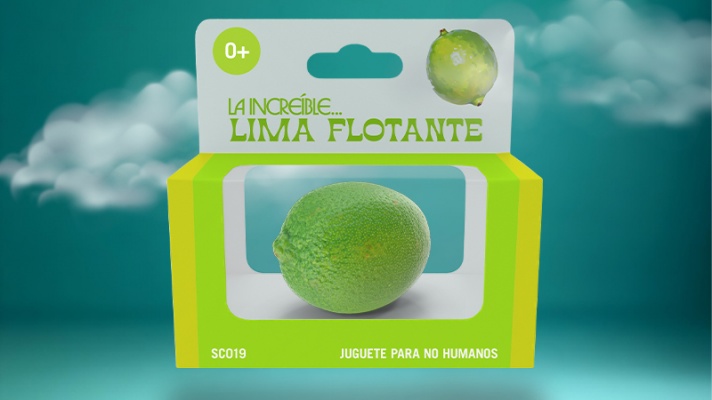Descripción de la Exposición
La Casa Invisible presents the first chapter of an art project initiated in 2022 by the artists Libia Castro & Ólafur Ólafsson in collaboration with La Casa Invisible, curator Gemma Medina and architect José Manuel López Osorio. The exhibition The Rehabilitation of La Casa Invisible—Chapter I (TRoLCI—I) brings together this project of Arte Útil expanding beyond disciplines in which Art, Architecture, Sustainable Development, Civic Engagement and Law, join forces becoming tools for thought and action.
TRoLCI originates as a collaborative and community-scale undertaking, where art and activism go in tandem in a strategy countering the latest eviction process that Málaga’s City Council initiated against La Invisible in early 2022. This ongoing project in collaboration with creators and collectives of the citizen-run sociocultural center and other professionals, critically reflects on and defends the Present and Future of La Invisible, the Right to the City and the value of glocal culture, versus the commodification and touristification advancing and consuming Málaga’s historic district. A context of gentrification that provoked the birth of this experimental community center 16 years ago which is hosted in a 19th-century Neo-Arabic building, that has remained in a continuous state of “cre-action”, critical resistance and negotiation opposing the recurring pressure exerted by the City Council to evict them.
Libia & Ólafur’s proposal with La Invisible reawakens an integral, sustainable, ecological, social, and visionary Rehabilitation Plan to be executed in phases—without having to stop the center’s activities—for the building, through a video work, performative public interventions, workshops and the exhibition at large. The Plan was developed in 2016 by architect López Osorio and his master students in collaboration with the cultural center, at the request of the City Council to proceed with the full concession of the public property, which the Council then didn’t grant, despite having been positively reviewed by the city’s Urban Planning Management. The video work portrays the multi-faceted interventionist work, the building and collective process in presenting the Rehabilitation Project and context of the cultural center. It is narrated by a diversity of voices of the House and the city and through different intertwined languages - from plastic, dance, music, architecture, street theater, found footage, to performative and political action. The video as for other of Libia’s & Ólafur’s collaborative audiovisual works is a hybrid format, with scripted performative interventions, that reflects on and puts forward a demand from the Commons and the city to support La Invisible as a necessary place.
TRoLCI-1 proposes to rethink the architectural project through art, weaving new networks of collaboration and advocating to restart the dialogue with the City Council, demonstrating the viability of the Comprehensive Rehabilitation Plan. The exhibition promotes the project’s collective implementation and wants to contribute to the center finally receiving the full concession of the public property for its common management. The show unfolds breaking away from a paradigm of western modernity, the white cube and art’s claim on autonomy. The artistic intervention, La Casa Invisible, the rehabilitation, its care, the video work, its demands and its campaign are in a situated whole. The building’s rooms have become a sensitized multimedia environment that coexists with other ongoing activities without deactivating the different uses of most of these shared multi-functional spaces, signifying the building’s common and unique management while permanently intervening and restoring parts of it.
The main ideas of the architectural project and La Invisible’s communal nature are presented through these series of multimedia installations including video art, sculpture, drawing, textile works, prints, documents and interventions in the building’s architecture. Examples of traditional craftsmanship accompanying new engineering knowledge and the construction of monumental sculptural prototypes 1:1 scale that can be built in during the wished renovation are being shown, which resulted from the project’s workshops organized prior to the exhibition in collaboration with the Architecture Schools of the Universities of Málaga and Sevilla.
Team: The artists Libia Castro (Spain/Netherlands) & Ólafur Ólafsson (Iceland/Netherlands) exhibited at a.o. the 8th Havana Biennial, Manifesta 7, 54th Venice Biennale, 19th Sydney Biennial and were awarded the 2021 Icelandic Art Prize, Gemma Medina PhD in art history, independent curator, educator and researcher of Asociación de Arte Útil (Spain/Netherlands), José Manuel López Osorio (Spain) PhD Prof. in architecture, specialist in rehabilitation and heritage, and members of La Casa Invisible.
Collaborators: a.o. Gianluca Stasi (Italy/Spain), Alexander Premala Vollebregt (Netherlands/Curaçao), Carlos Sanjuan (Spain), Anouk Rielo (Spain), Andrea Boglioni (Argentina), Ildefonso Narváez (Spain), Paloma Esteban (Spain), Germán Luque (Spain), Rosendo Jiménez (Spain), Ofelia Castillo (Colombia), Alicia Carrió (Argentina), Lucía “Lula” Amir (Spain/Uruguay), Niche Ramírez (Cuba), María del Mar Suárez “La Chachi” (Spain), María Luisa Tomás “La Tiriti” (Spain), Daniel Natoli (Spain), T11-Espacio Creativo (Seville), Rizoma Fundación (Málaga) and Ctrl-Z (Seville), Törfusamtökin (Iceland) and Erasmus+ KA220-HED_Project SARPE.
Made possible with the generous support of the Mondriaan Fund (Netherlands), CBK- Center for the Visual Arts Rotterdam (Netherlands) and Artists’ Salary Grant (Iceland).

Exposición. 16 abr de 2025 - 11 may de 2025 / Centro Botín / Santander, Cantabria, España

Formación. 08 may de 2025 - 17 may de 2025 / Museo Nacional Centro de Arte Reina Sofía (MNCARS) / Madrid, España